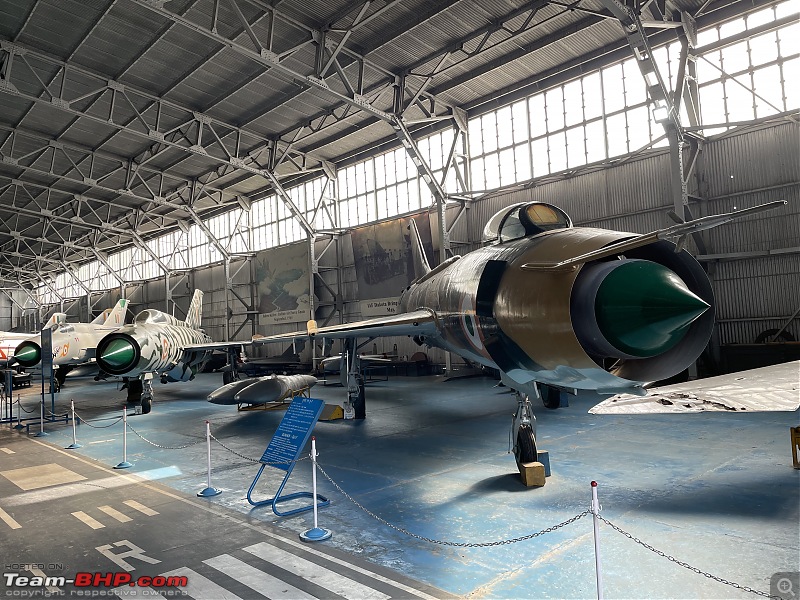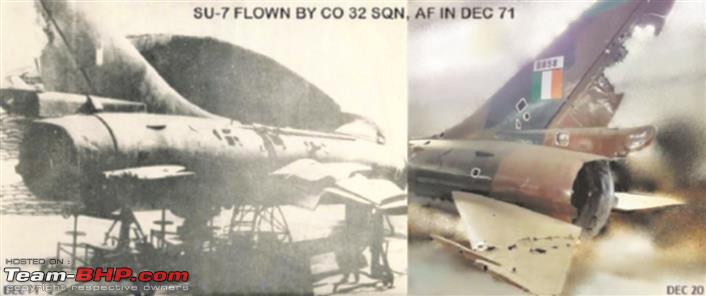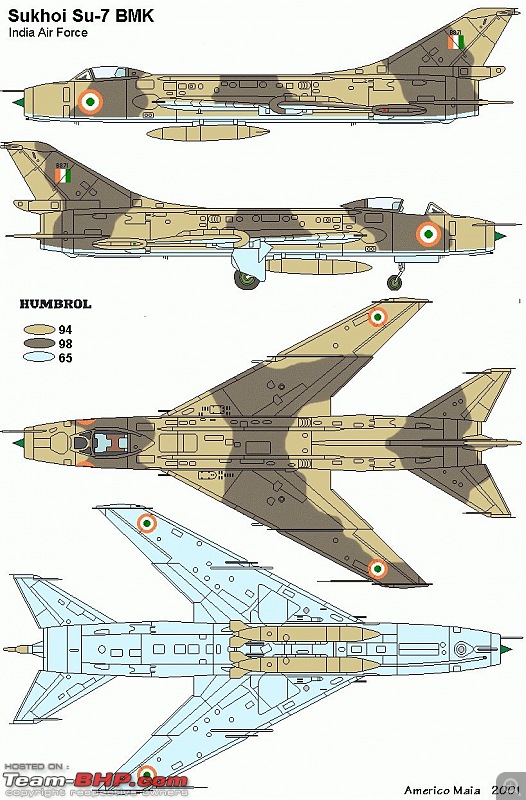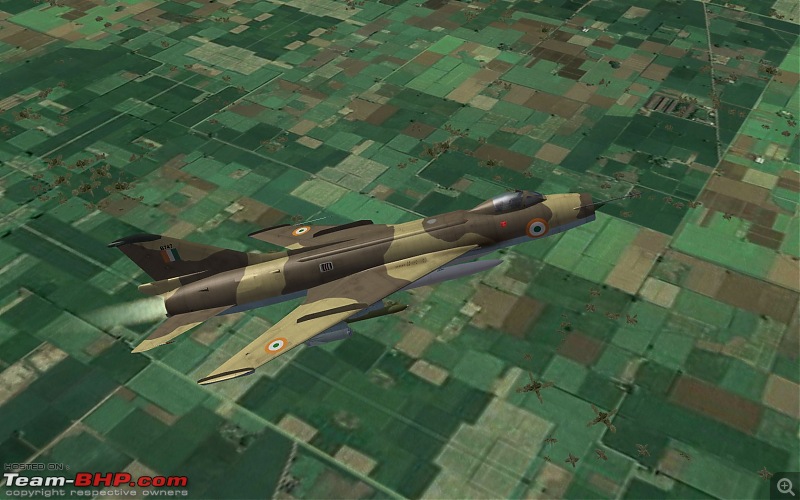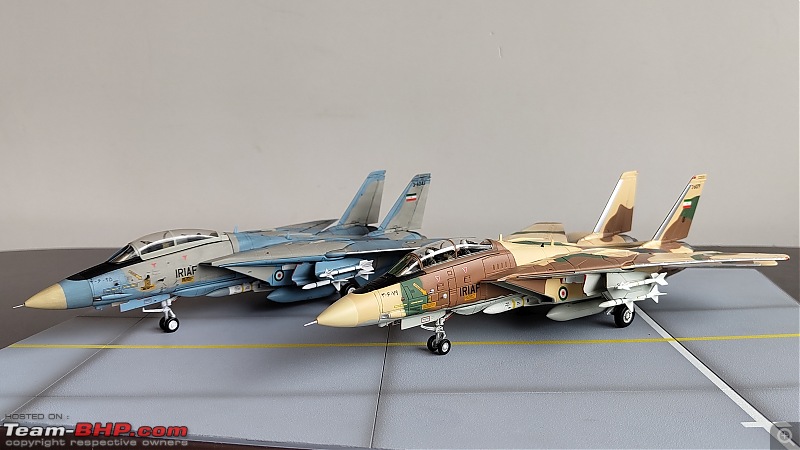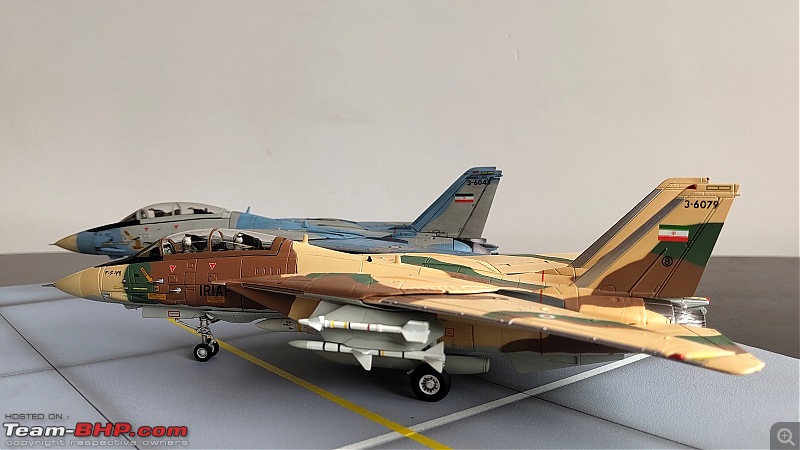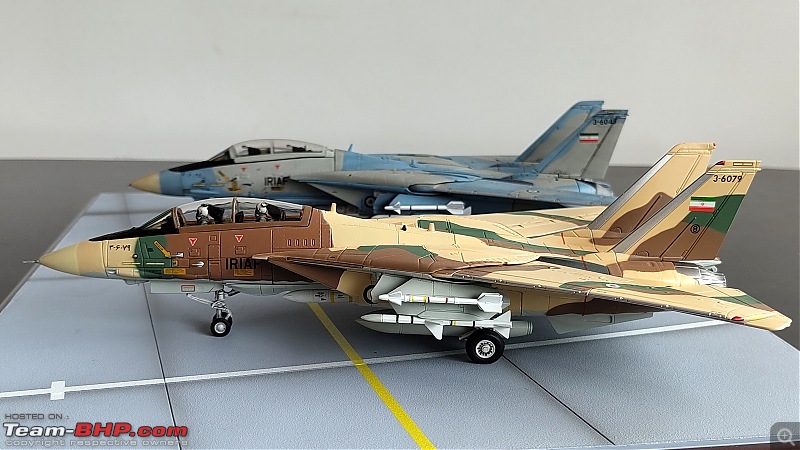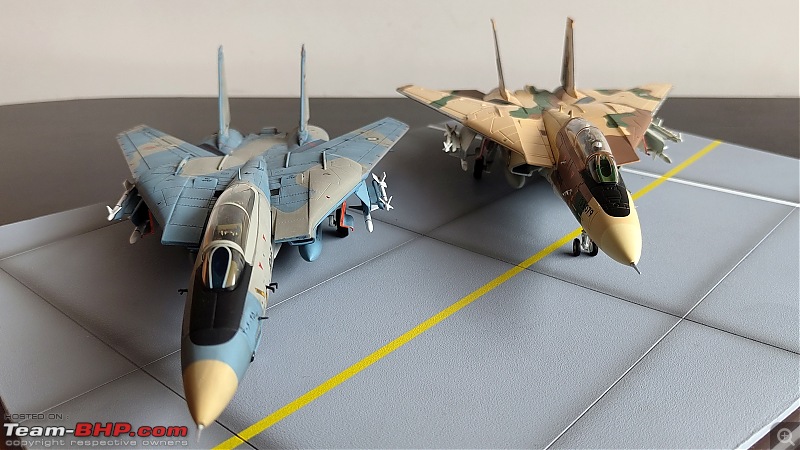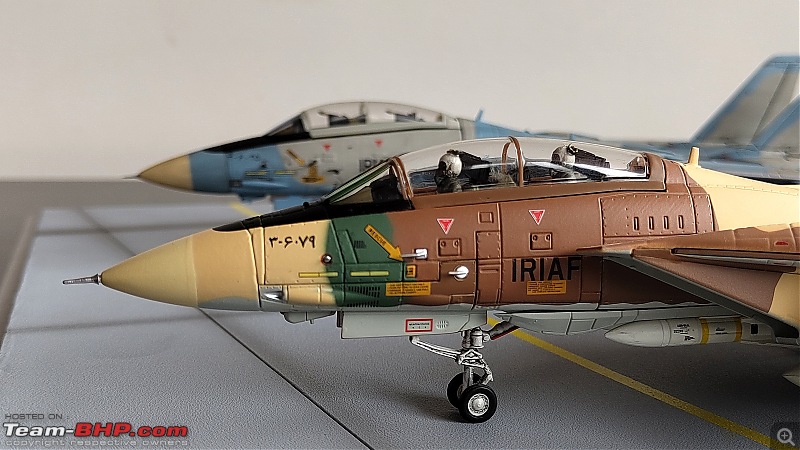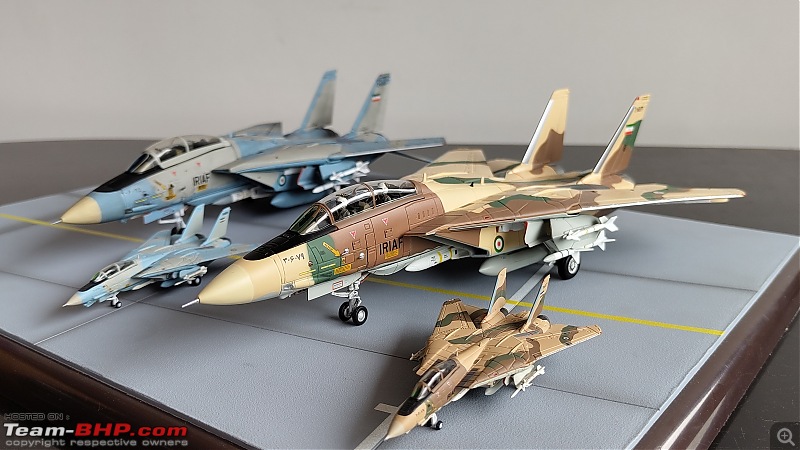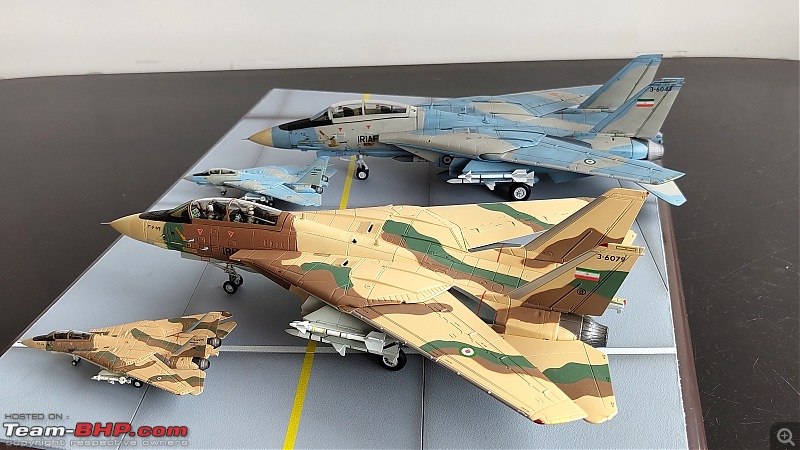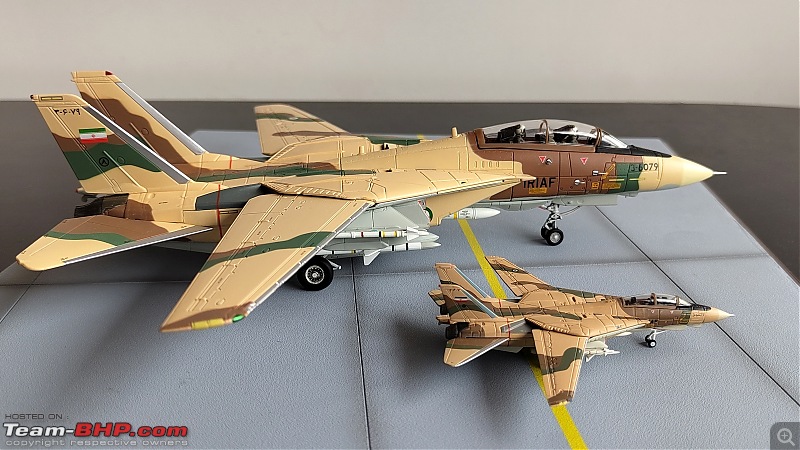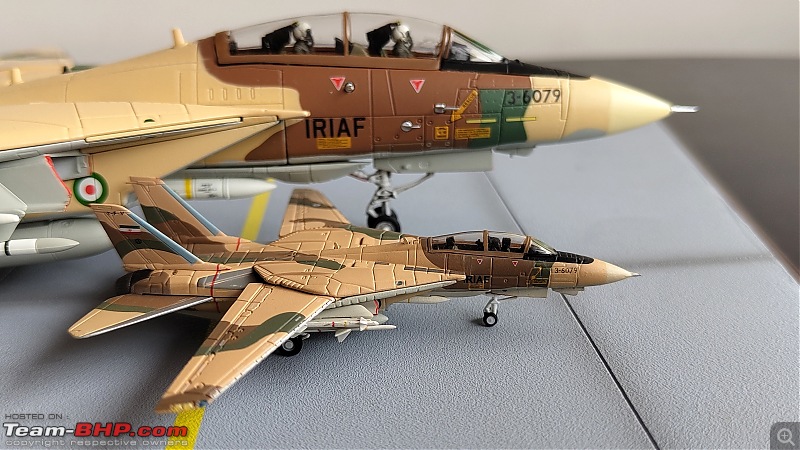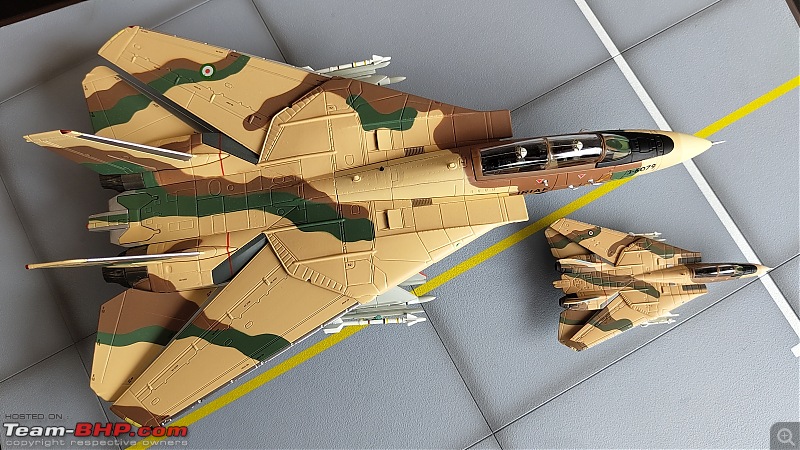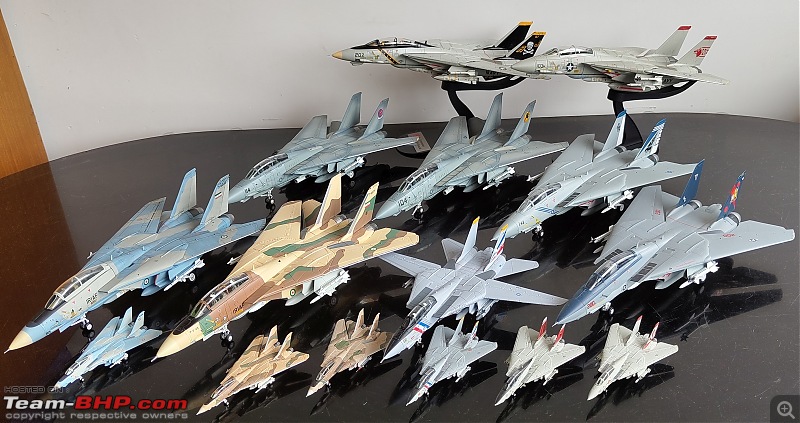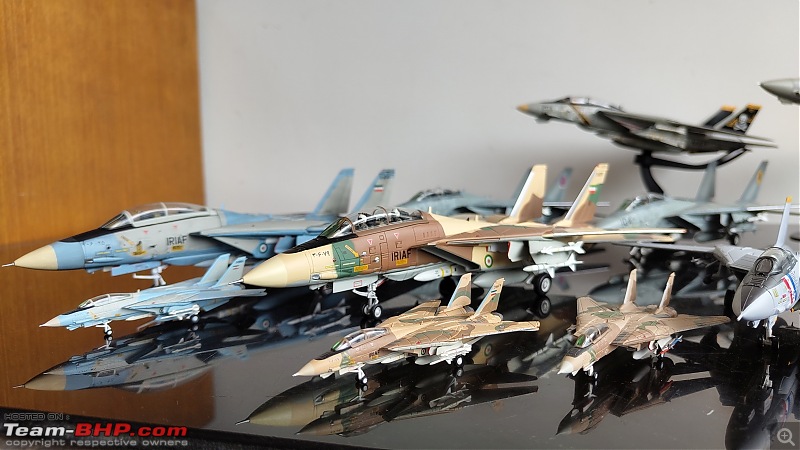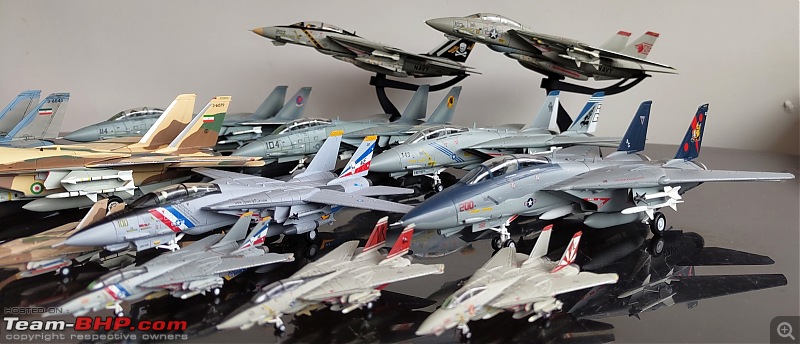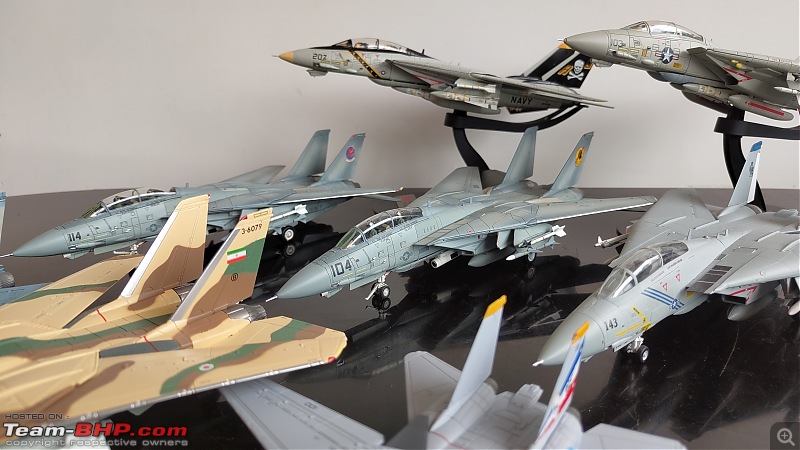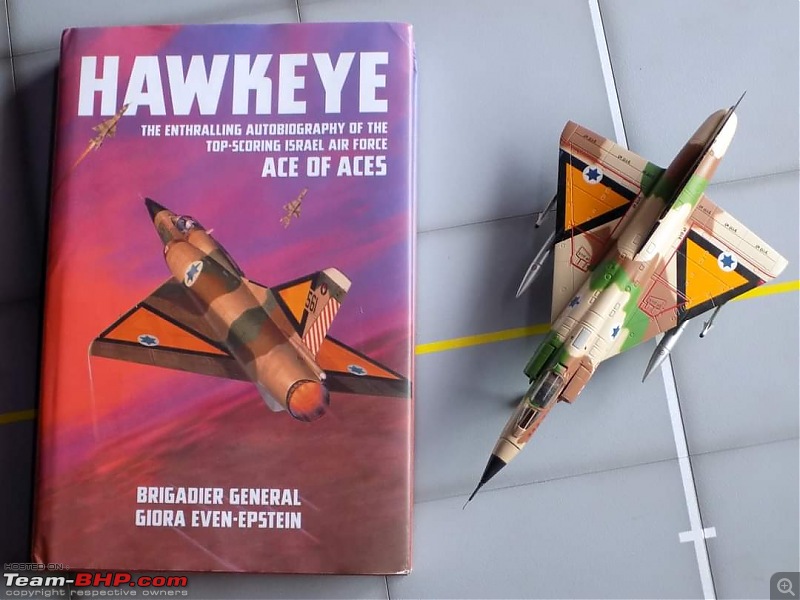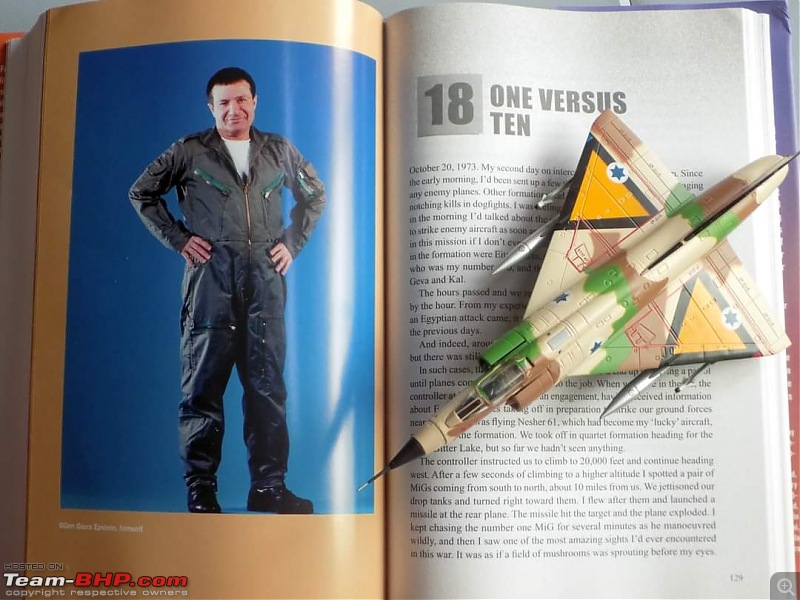Quote:
Originally Posted by V.Narayan  I am a swing wing design
My name put fear in the hearts of NATO in the 1980s
I am a dedicated lo-lo-lo attack aircraft. |
MiG-27?
1:72 Grumman F-14A Tomcat 3-6079 (160377), 82nd TFS, IRIAF, TFB.8 [Esfahăn Air base, Iran] (Calibre Wings)
F-14A 3-6079 was the last of 79 F-14As delivered to the IIAF(Imperial Iranian Air Force). The last F-14A that was mean to be delivered (3-6080) was never delivered by the US because of the Islamic revolution in Iran, which resulted in detention/execution of many IIAF pilots, RIOs/WSOs and technicians who were considered loyal to the Shah of Iran. The IIAF was re-named as the IRIAF (Islamic Republic of Iran Air Force).
When Iraq invaded Iran in 1980, the IRIAF did not have enough pilots, RIOs, WSOs and technicians to fight the war. The new regime did not have any choice but to free the jailed crew after a brief "re-education" camp. Almost all of them, seeing their country in danger, flew for the same people who had threatened to execute them. Thus began the saga of the F-14 in Iran, which continues till date.
Against this onslaught from a numerically superior enemy, the "new" IRIAF found itself with a rapidly-declining stockpile of weaponry and spare parts. The IRIAF’s force of American-built F-4s, F-5Es and F-14s was pitted against Iraq’s Soviet MiG-21, 23 and 25s and French Mirage F1s. The MiG-25 was the fastest fighter in the world, and was manned by Iraq’s elite fighter pilots- and was a daunting opponent. In the attack role, Iraq had the Super Etendard (armed with the AM39 Exocet) and the rugged Su-20 and 22s. Lack of US support meant the Air Force suffered. Many F-14s were cannibalized to keep the few flyable F-14s operational. Many F-14s were forced to fly armed with sidewinders and guns only and had relied on GCI for intercepts. Nevertheless, inspite of the problems, Iran's F-14s did a fabulous job of protecting Iran's skies. Inspite of being arch -enemies after the Iranian revolution under the Ayatollah, Iran did receive F-4 spare parts and weapons from Israel. F-14 and other aircraft spare parts and possibly weapons were received from the US through other sources.
The first confirmed kill by an IRIAF F-14A during the Iran–Iraq War occurred before the formal start of hostilities: on 7 September 1980, an IRIAF F-14A destroyed an Iraqi Mi-25 Hind helicopter using its internal 20mm Vulcan cannon. Six days later, Major Mohammad-Reza Attaie shot down an Iraqi MiG-21 with an AIM-54 Phoenix while flying a border patrol( the world's first AIM-54 kill). A single AIM-54 fired in July 1982 by Captain Hashemi may have destroyed two Iraqi MiG-23s flying in close formation. The use of AIM-54s was only sporadic during the start of the war, most likely because of a shortage of qualified radar intercept officers, and then more frequently in 1981 and 1982—until the lack of thermal batteries suspended the missiles’ use in 1986.There were also rumours that suggested that Iran’s Tomcat fleet would be upgraded with avionics derived from the MiG-31 “Foxhound”. However, IRIAF officials and pilots insist that the Soviets were never allowed near the F-14s, and never received any F-14 or AIM-54 technology. Also, the AIM-54 missile was never out of service in the IRIAF, though the stocks of operational missiles were low at times. Clandestine deliveries from US sources and black market purchases supplied spares to top up the Phoenix reserves during the war, and spares deliveries from the USA in the 1990s have also helped. Furthermore, an attempt was made to adapt the MIM-23 Hawk surface-to-air missiles that were also a carry-over from the pre-revolution period, to be used as air-to-air missiles for the F-14; at least two F-14s have been successfully modified to carry the hybrid weaponry.
All in all, the IRIAF was said to have launched possibly 70 to 90 AIM-54A missiles, and 60–70 of those scored. Of those, almost 90 percent of the AIM-54A missiles fired were used against Iraqi fighters and fighter-bombers. Only about a dozen victories by AIM-54s were claimed to be against fast, high-flying targets such as the MiG-25 or Tu-22 ‘Blinder’.
One IRIAF pilot distinguished himself in combat by becoming the all-time top scoring F-14 ace. Major Jalil Zandi is credited with shooting down eight Iraqi aircraft. He is additionally credited with three probable kills, bringing his total to 11 air victories. These include four MiG-23s, two Su-22s, two MiG-21 and three Mirage F1s. He is the most successful F-14 Tomcat pilot worldwide.
F-14A 3-6079 
F-14A S/N 3-6079 was one of the most successful Tomcats in Iranian service. It was used for downing of one Iraqi MiG-21 and a MiG-23 early in the war. On 9 February 1988, it was used by 1st Lt. Qiyassi & his RIO for downing three Iraqi Mirage F.1EQs during two subsequent engagements within two hours.
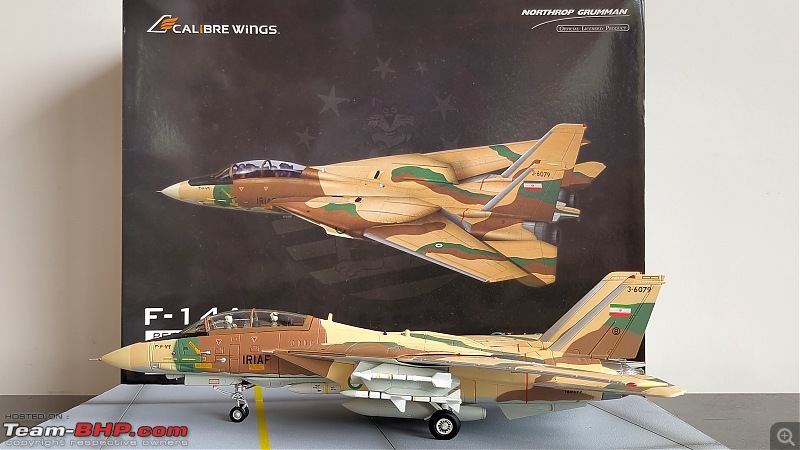
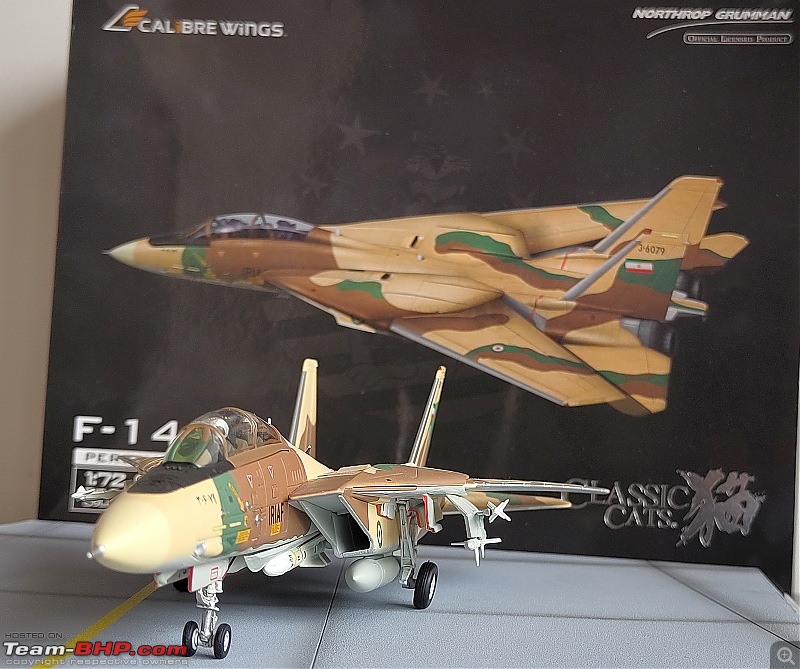
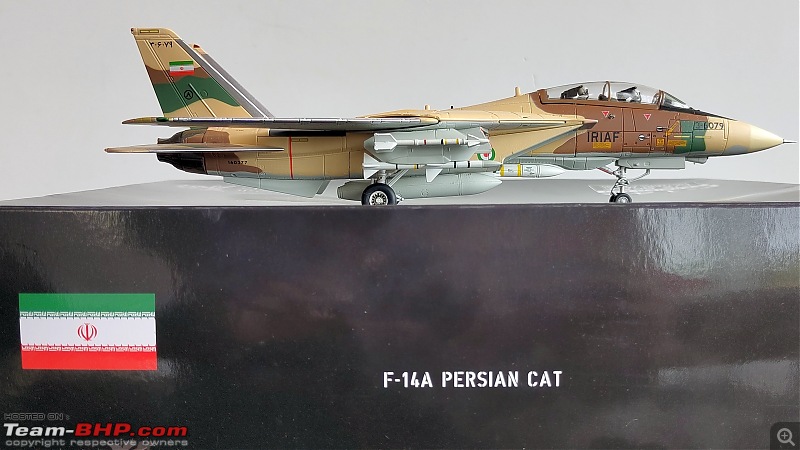
 No. 199 of 1000 manufactured
No. 199 of 1000 manufactured
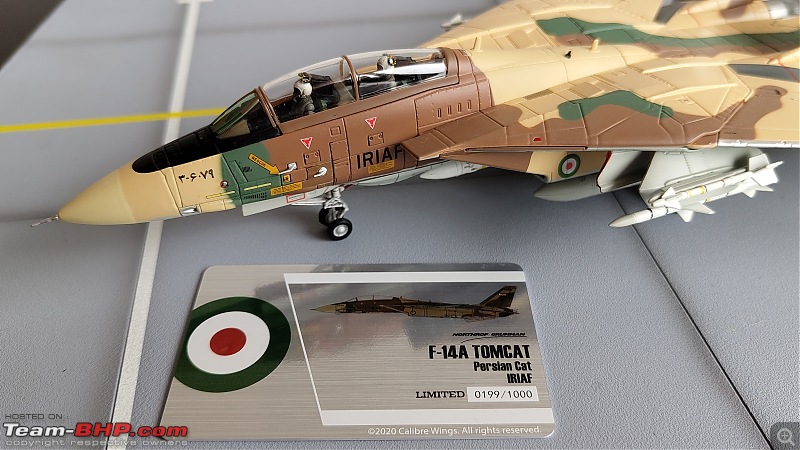
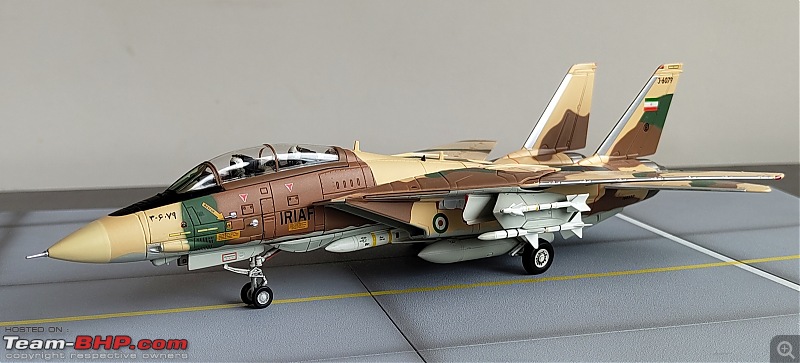
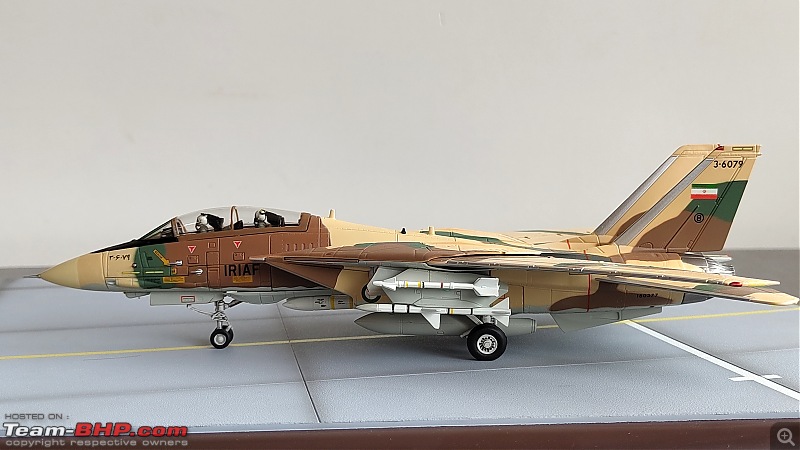

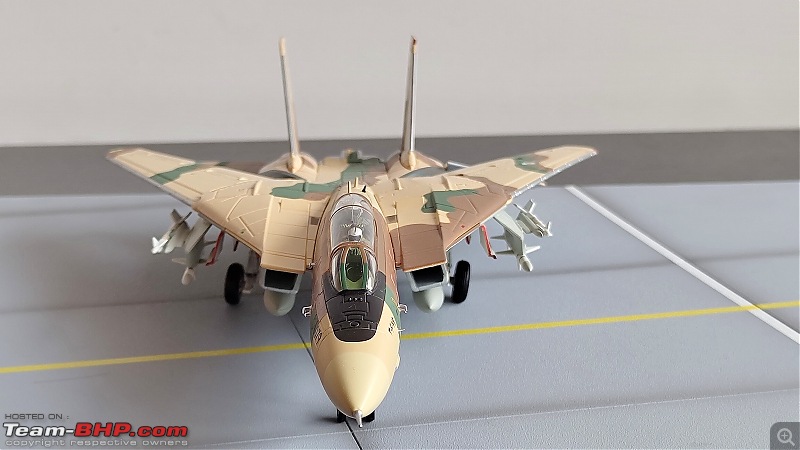
Note how the IRIAF F-14As just have the ALQ-100 antenna on the chin unlike US Navy F-14As that had IR seeker or TCS camera on the chin(TCS Cameras were supposed to a part of the IIAF F-14A and were to be delivered later)
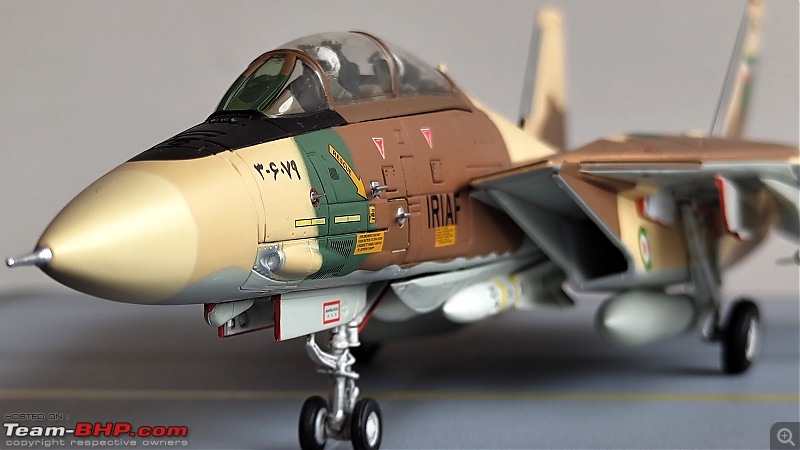

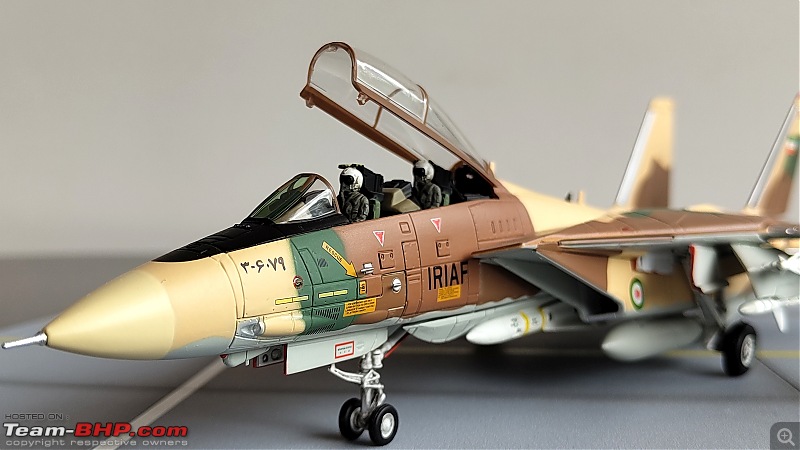
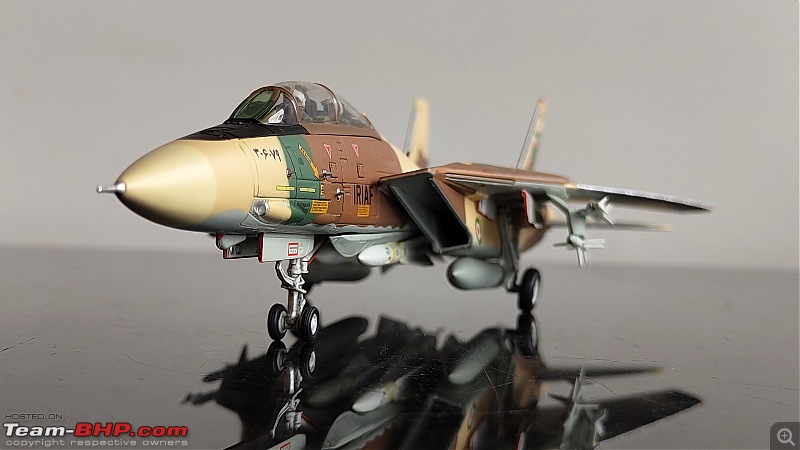
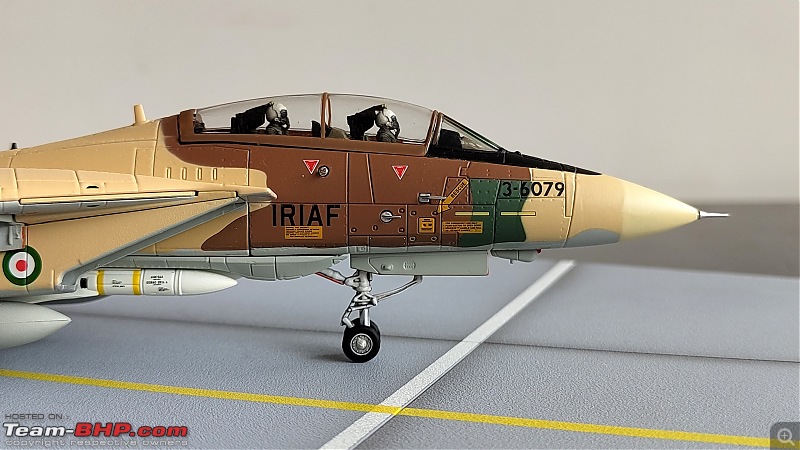
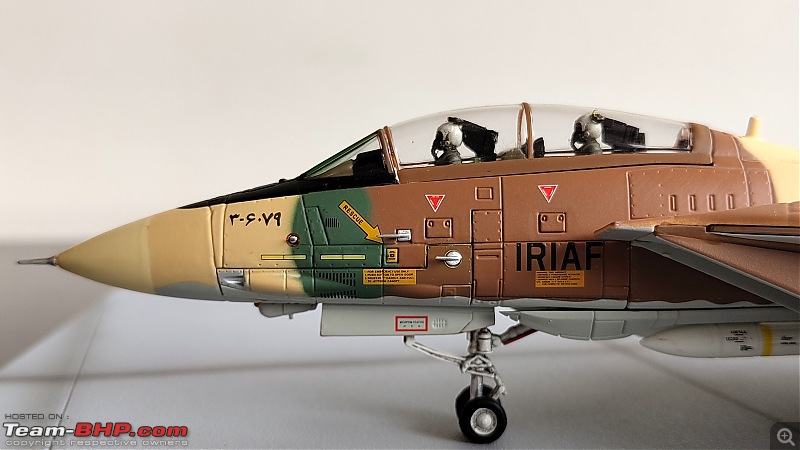
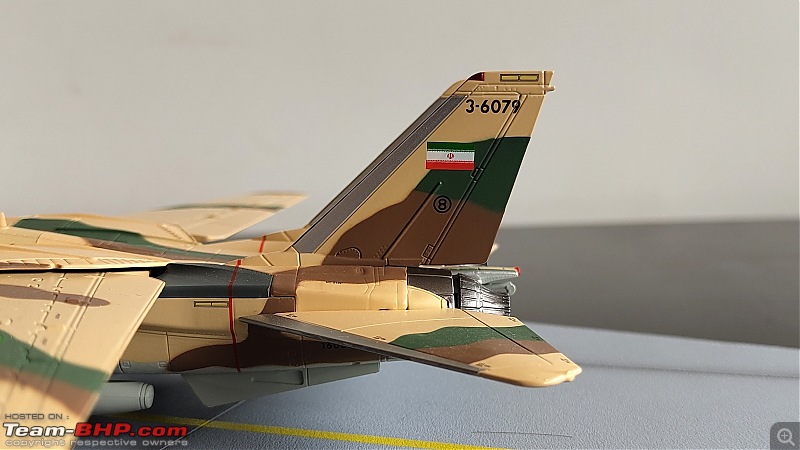

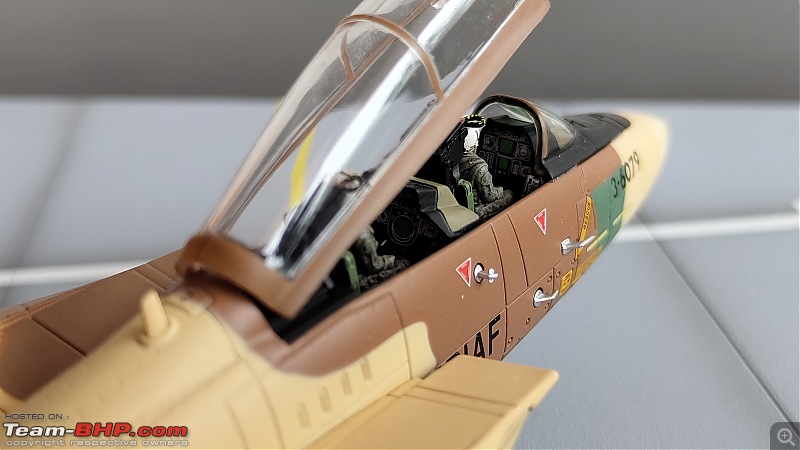
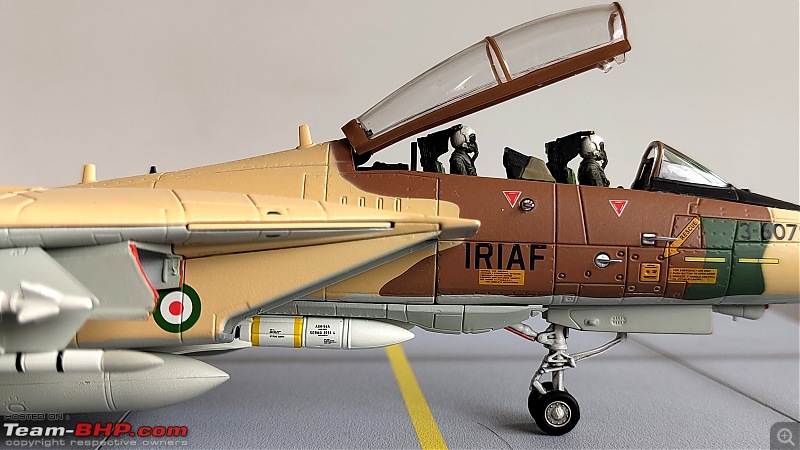
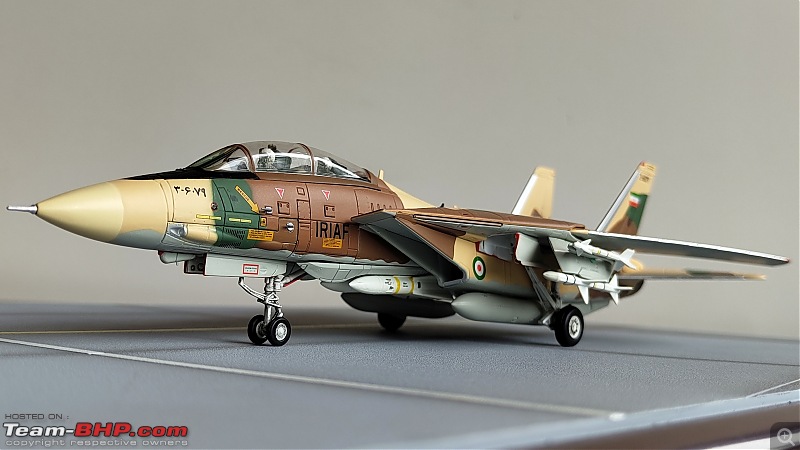
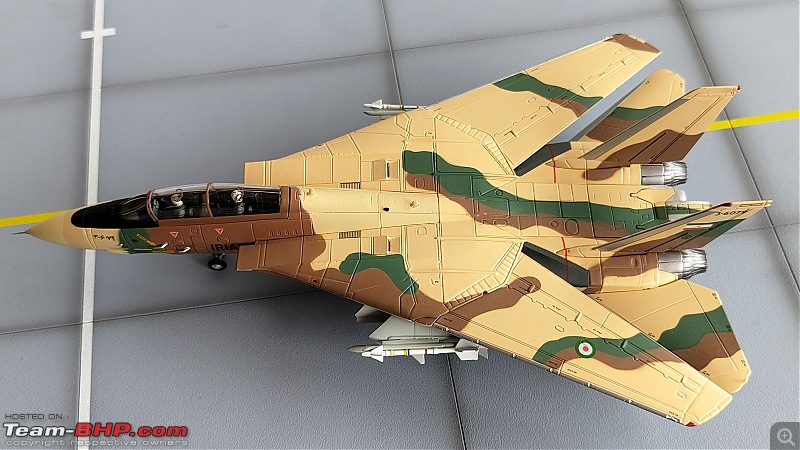

 (4)
Thanks
(4)
Thanks

 (1)
Thanks
(1)
Thanks
 (1)
Thanks
(1)
Thanks
 (3)
Thanks
(3)
Thanks

 (2)
Thanks
(2)
Thanks

 (5)
Thanks
(5)
Thanks
 (4)
Thanks
(4)
Thanks
 (3)
Thanks
(3)
Thanks
 (4)
Thanks
(4)
Thanks

 (4)
Thanks
(4)
Thanks

 (5)
Thanks
(5)
Thanks
 (3)
Thanks
(3)
Thanks

 (4)
Thanks
(4)
Thanks
 (2)
Thanks
(2)
Thanks






 I guess a new photo shoot is due of the 1:72 collection. Maybe you should go for a custom 1:48 model? I made one as a child and it was huge.
I guess a new photo shoot is due of the 1:72 collection. Maybe you should go for a custom 1:48 model? I made one as a child and it was huge.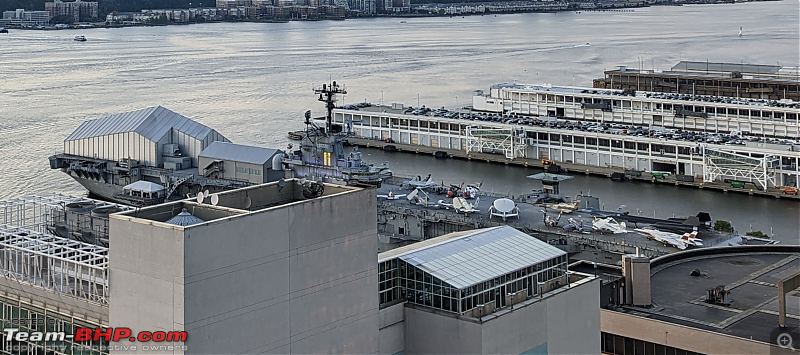
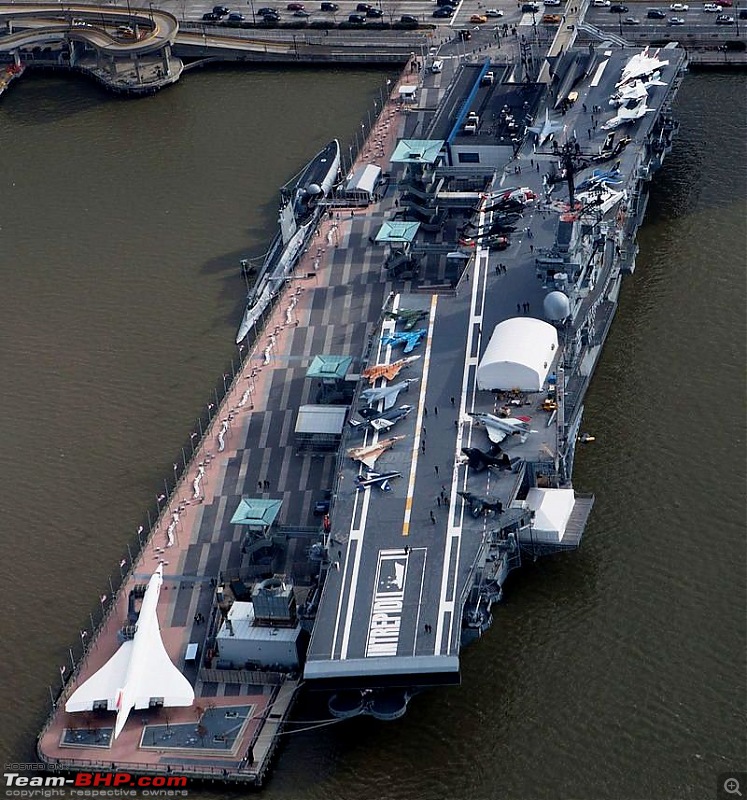



 Definitely one of the best works by Basuroy. The battle damage is so realistic and very hard to make as its mostly hit and trial work.
Definitely one of the best works by Basuroy. The battle damage is so realistic and very hard to make as its mostly hit and trial work.